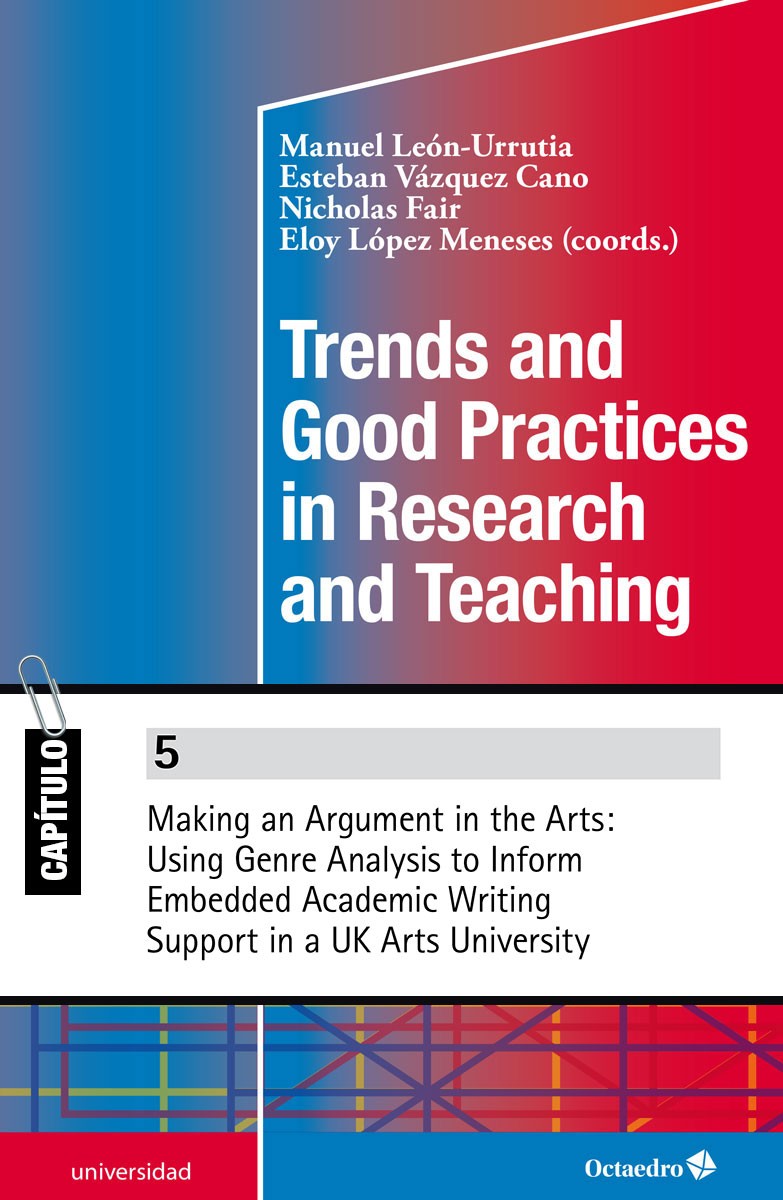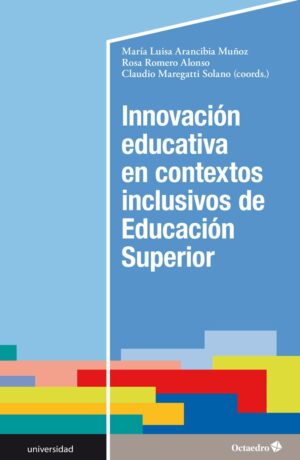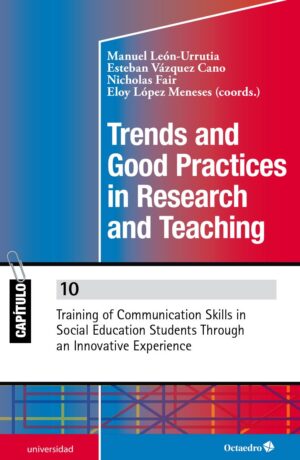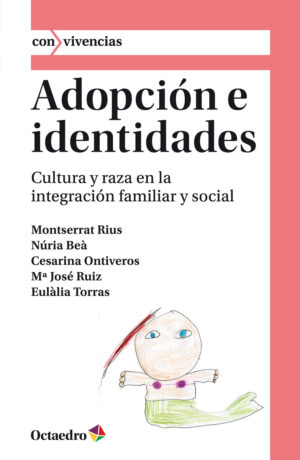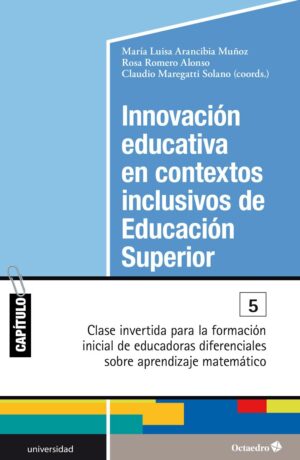FICHA TÉCNICA
Fecha de publicación:
01/01/2020
DOI: https://doi.org/10.36006/16184-05
Título del libro: Trends and Good Practices in Research and Teaching
URL del libro: Trends and Good Practices in Research and Teaching
ISBN:
DOI del libro: https://doi.org/10.36006/16184
Abstract
Students entering art and design courses in UK higher education come from a range of educational and cultural backgrounds. These students frequently report finding academic writing challenging. Expectations as to the nature of description, analysis and criticality can also differ across subject areas. As a result, students need support in developing their ability to communicate appropriately within their disciplines – their academic literacies. This study applies genre analysis to identify ways in which students express critical thinking in undergraduate Visual Effects Design and Production essays. The findings highlight common ways of linking ideas through exemplification, drawing conclusions from grounds, and challenging the validity of assumptions. Ways of expressing the strength of claims and indicating the writer’s attitude are also frequently used in the sample. The findings are then integrated into a practical model for impromptu teaching of writing by subject lecturers. The article confirms understandings of the way students express criticality in essays, and aligns insights from genre analysis and academic literacies in a novel way. The outcome is a proposal for a practical, low-preparation approach to teaching academic writing within the disciplines.Keywords: blended learning, active methodologies, students’ participation, learning community, teaching-learning processes.
Palabras clave
Autores
Cómo citar
White, S., Nicholls, M. (2019). Making an Argument in the Arts: Using Genre Analysis to Inform Embedded Academic Writing Support in a UK Arts University. En León-Urrutia, M., Vázquez Cano, E., Fair, N., López Meneses, E. (coords.) Trends and Good Practices in Research and Teaching. A Spanish-English Collaboration. Barcelona: Octaedro. https://doi.org/10.36006/16184-05
Referencias bibliográficas
- Borg, E. (2012). Writing differently in Art and Design: Innovative approaches to writing tasks. In Hardy, C. & Clughen, L. (eds), Writing in the Disciplines: Building Supportive Cultures for Student Writing in UK Higher Education. Bingley: Emerald Group Publishing, pp. 169-187.
- Bruce, I. (2008). Academic writing and genre: A systematic analysis. Bloomsbury.
- Bruce, I. (2016). Constructing critical stance in University essays in English literature and sociolog, English for Specific Purposes. Pergamon, 42, 13-25.
- Chanock, K. (2000). Comments on Essays: Do students understand what tutors write?, Teaching in Higher Education. Kate Chanock, 5 (1), 95-105.
- Crombie, W. (1985). Process and relation in discourse and language learning. Oxford: Oxford University Press.
- Hewings, M. (2010). Materials for university essay writing. In Harwood, N. (ed.), English language teaching materials. Cambridge: Cambridge University Press, pp. 251-278.
- Hyland, K. (2004). Disciplinary discourses: social interactions in academic writing. University of Michigan Press.
- — (2005). Metadiscourse: Exploring interaction in writing. London: Continuum.
- — (2008). Genre and academic writing in the disciplines, Language Teaching, 41 (4), 543–562.
- — (2017). Metadiscourse: What is it and where is it going?, Journal of Pragmatics, 113, 16-29.
- Lillis, T. M. (2006). Student writing as “Academic Literacies” pedagogy: dialogues of participation. In Teaching Academic Writing in UK Higher Education. Basingstoke: Palgrave Macmillan, pp. 30-45.
- Maldoni, A. & Lear, E. (2016). A decade of embedding: Where are we now?, Journal of University Teaching & Learning Practice, 13 (3).
- Maldoni, A. M. (2017). A cross-disciplinary approach to embedding: A pedagogy for developing academic literacies, Journal of Academic Language & Learning, 11 (1), A104-A124.
- Moore, T. (2013). Critical thinking: seven definitions in search of a concept, Studies in Higher Education. Routledge, 38 (4), 506-522. doi: 10.1080/03075079.2011.586995.
- Moore, T. & Morton, J. (2005). Dimensions of difference: a comparison of university writing and IELTS writing, Journal of English for Academic Purposes. Pergamon, 4 (1), 43-66.
- Nesi, H. & Gardner, S. (2012). Genres across the disciplines: Student writing in higher education. Cambridge: Cambridge University Press.
- Paltridge, B. (2014). Genre and second-language academic writing, Language Teaching, 47 (3), 03-318.
- Paltridge, B., Starfield, S., Ravelli, L. J., & Tuckwell, K. (2012). Change and stability: Examining the macrostructures of doctoral theses in the visual and performing arts, Journal of English for Academic Purposes. Pergamon, 11 (4), 332-344.
- Ravelli, L., Paltridge, B., Starfield, S., & Tuckwell, K. (2013). Extending the notion of “text”: the visual and performing arts doctoral thesis, Visual Communication, 12 (4), 395-422.
- Toulmin, S. (2003). The uses of argument. Cambridge: Cambridge University Press.
- Wingate, U. (2006). Doing away with “study skills”, Teaching in Higher Education, 11 (4), 457-469.
- — (2015). Academic literacy and student diversity : the case for inclusive practice. Multi-lingual Matters.
- — (2016). Academic literacy across the curriculum: Towards a collaborative instructional approach, Language Teaching, 51 (3), 349-364.
- Wingate, U. & Tribble, C. (2011). The best of both worlds? Towards an English for Academic Purposes/Academic Literacies writing pedagogy, Studies in Higher Education, pp. 1-15.
- — (2012). The best of both worlds? Towards an English for Academic Purposes/Academic Literacies writing pedagogy, Studies in Higher Education, 37 (4), 481-495.
Mostrar referencias bibliográficas
- Borg, E. (2012). Writing differently in Art and Design: Innovative approaches to writing tasks. In Hardy, C. & Clughen, L. (eds), Writing in the Disciplines: Building Supportive Cultures for Student Writing in UK Higher Education. Bingley: Emerald Group Publishing, pp. 169-187.
- Bruce, I. (2008). Academic writing and genre: A systematic analysis. Bloomsbury.
- Bruce, I. (2016). Constructing critical stance in University essays in English literature and sociolog, English for Specific Purposes. Pergamon, 42, 13-25.
- Chanock, K. (2000). Comments on Essays: Do students understand what tutors write?, Teaching in Higher Education. Kate Chanock, 5 (1), 95-105.
- Crombie, W. (1985). Process and relation in discourse and language learning. Oxford: Oxford University Press.
- Hewings, M. (2010). Materials for university essay writing. In Harwood, N. (ed.), English language teaching materials. Cambridge: Cambridge University Press, pp. 251-278.
- Hyland, K. (2004). Disciplinary discourses: social interactions in academic writing. University of Michigan Press.
- — (2005). Metadiscourse: Exploring interaction in writing. London: Continuum.
- — (2008). Genre and academic writing in the disciplines, Language Teaching, 41 (4), 543–562.
- — (2017). Metadiscourse: What is it and where is it going?, Journal of Pragmatics, 113, 16-29.
- Lillis, T. M. (2006). Student writing as “Academic Literacies” pedagogy: dialogues of participation. In Teaching Academic Writing in UK Higher Education. Basingstoke: Palgrave Macmillan, pp. 30-45.
- Maldoni, A. & Lear, E. (2016). A decade of embedding: Where are we now?, Journal of University Teaching & Learning Practice, 13 (3).
- Maldoni, A. M. (2017). A cross-disciplinary approach to embedding: A pedagogy for developing academic literacies, Journal of Academic Language & Learning, 11 (1), A104-A124.
- Moore, T. (2013). Critical thinking: seven definitions in search of a concept, Studies in Higher Education. Routledge, 38 (4), 506-522. doi: 10.1080/03075079.2011.586995.
- Moore, T. & Morton, J. (2005). Dimensions of difference: a comparison of university writing and IELTS writing, Journal of English for Academic Purposes. Pergamon, 4 (1), 43-66.
- Nesi, H. & Gardner, S. (2012). Genres across the disciplines: Student writing in higher education. Cambridge: Cambridge University Press.
- Paltridge, B. (2014). Genre and second-language academic writing, Language Teaching, 47 (3), 03-318.
- Paltridge, B., Starfield, S., Ravelli, L. J., & Tuckwell, K. (2012). Change and stability: Examining the macrostructures of doctoral theses in the visual and performing arts, Journal of English for Academic Purposes. Pergamon, 11 (4), 332-344.
- Ravelli, L., Paltridge, B., Starfield, S., & Tuckwell, K. (2013). Extending the notion of “text”: the visual and performing arts doctoral thesis, Visual Communication, 12 (4), 395-422.
- Toulmin, S. (2003). The uses of argument. Cambridge: Cambridge University Press.
- Wingate, U. (2006). Doing away with “study skills”, Teaching in Higher Education, 11 (4), 457-469.
- — (2015). Academic literacy and student diversity : the case for inclusive practice. Multi-lingual Matters.
- — (2016). Academic literacy across the curriculum: Towards a collaborative instructional approach, Language Teaching, 51 (3), 349-364.
- Wingate, U. & Tribble, C. (2011). The best of both worlds? Towards an English for Academic Purposes/Academic Literacies writing pedagogy, Studies in Higher Education, pp. 1-15.
- — (2012). The best of both worlds? Towards an English for Academic Purposes/Academic Literacies writing pedagogy, Studies in Higher Education, 37 (4), 481-495.
